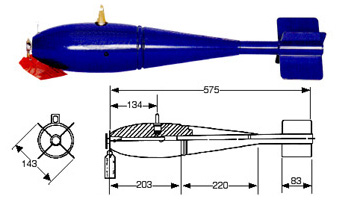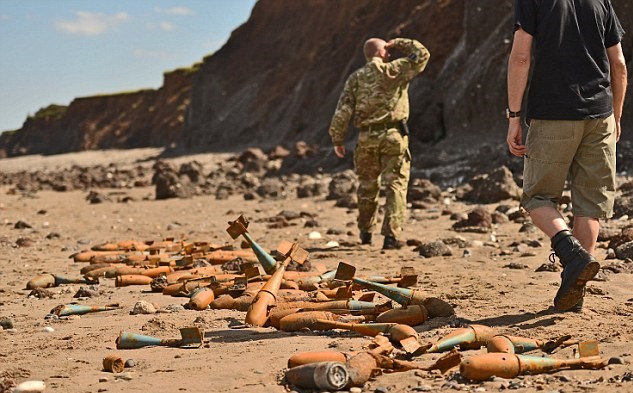Yorkshire beach yields more practice munitions
Three practice bombs have washed up on Mappleton Beach in the East Riding of Yorkshire. Reported by a dog walker, the Coast Guard immediately summed a military bomb squad to the scene.
The 11 EOD regiment (Royal Logistic Corps) attended and disposed of the practice bombs during controlled detonations.
BDU-33 Practice Bomb
The devices in question appear to be BDU-33 munitions. These “dummy bombs” are manufactured by the US and used by both the USAF and RAF. The BDU-33 is a small steel non-explosive ordnance that is used in training to simulate a live bomb; specifically the MK 82 GP bomb. These training munitions, by design, have similar flight and delivery behaviour to the MK 82.
BDU-33 bombs weigh 25lb (11kg) and have a spotting charge (a signal) that fires on impact. Generally, signals can be grouped as “hot” or “cold”. Hot signals normally use a phosphorous component expelled upon impact with a force comparable to a shotgun. The phosphorous causes a narrow flame lasting a fraction of a second followed by white smoke. This signal can be scored by day or night. Cold signals normally use titanium tetrachloride and only produce smoke.

Although small, the spotting charges contained within these bombs are still explosive compositions and therefore they are still potentially dangerous.
Historical Bombing Range
Mappleton Beach has long been an unexploded ordnance (UXO) hotspot. The beach and intertidal zone has a long history with Allied air forces. The RAF operated a 600 acre (240 ha) bombing range on the beaches of Cowden and Mappleton between 1959 and 1998. The range was eventually closed due to extreme coastal erosion.
As well as practice bombs, the wider area has seen various air to ground and air to air rocket finds, as well as small, yet still dangerous auto-cannon shells.
In 2012, Mappleton saw its biggest UXO incident to date when approximately 1,000 items were revealed by a landslide.

UXO Disposal Specialists
At Brimstone, we are equipped with a license to acquire and keep explosives in two counties and hold a 250kg explosive magazine for nationwide UXO disposal tasks, meaning we can tackle all explosive ordnance contamination projects.
Keep up to date with Brimstone UXO by following us on Facebook, Instagram, Twitter, LinkedIn and YouTube.